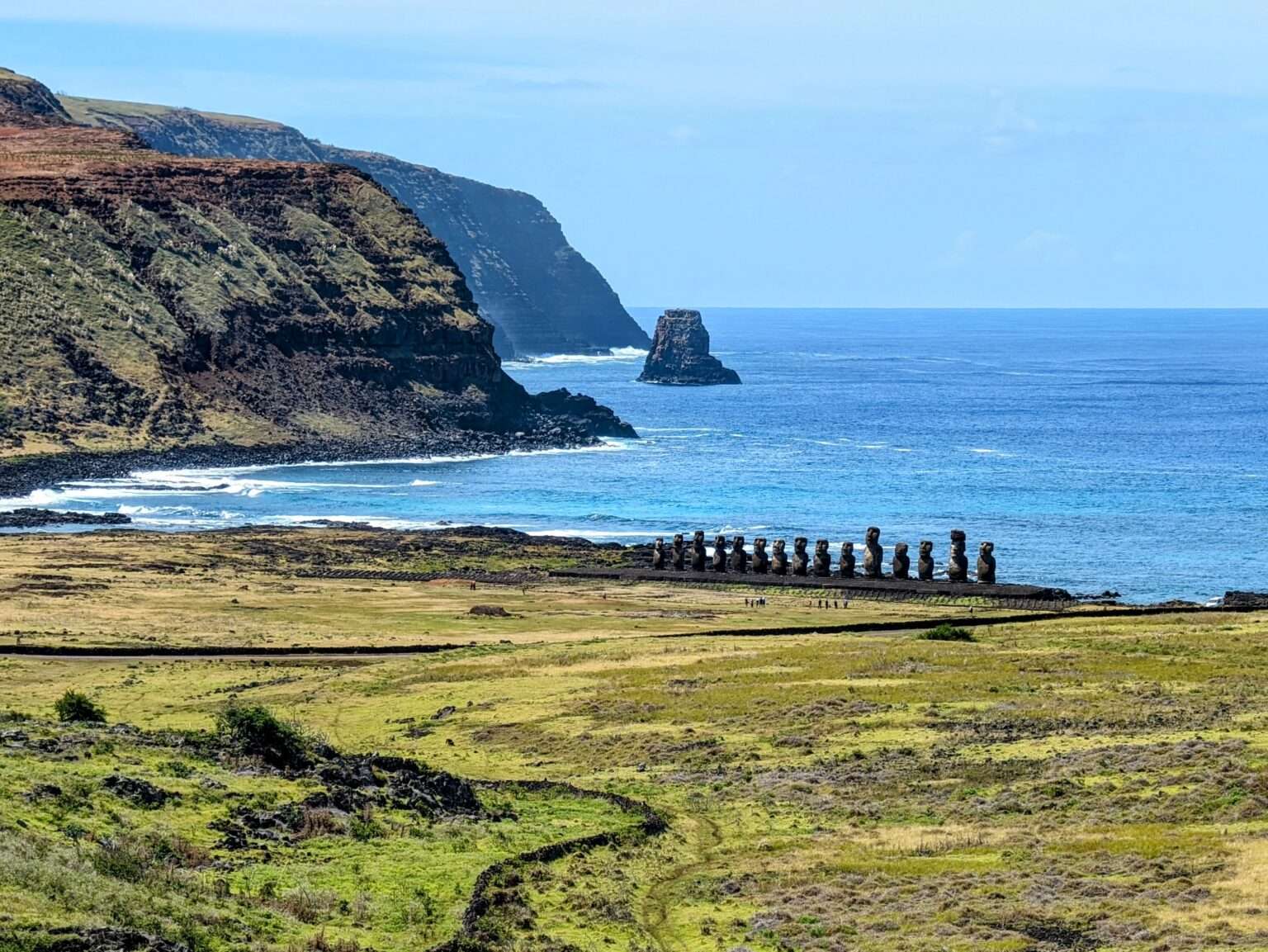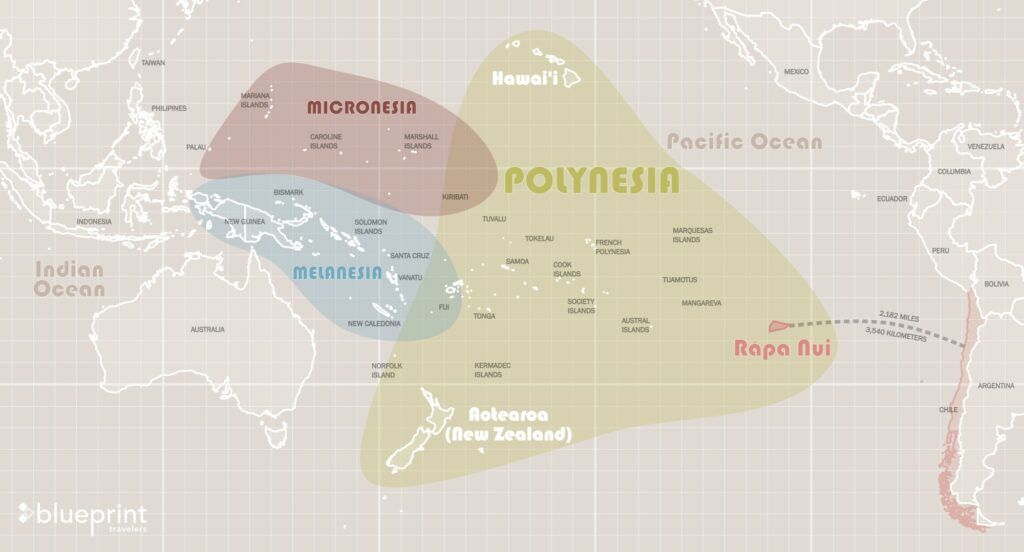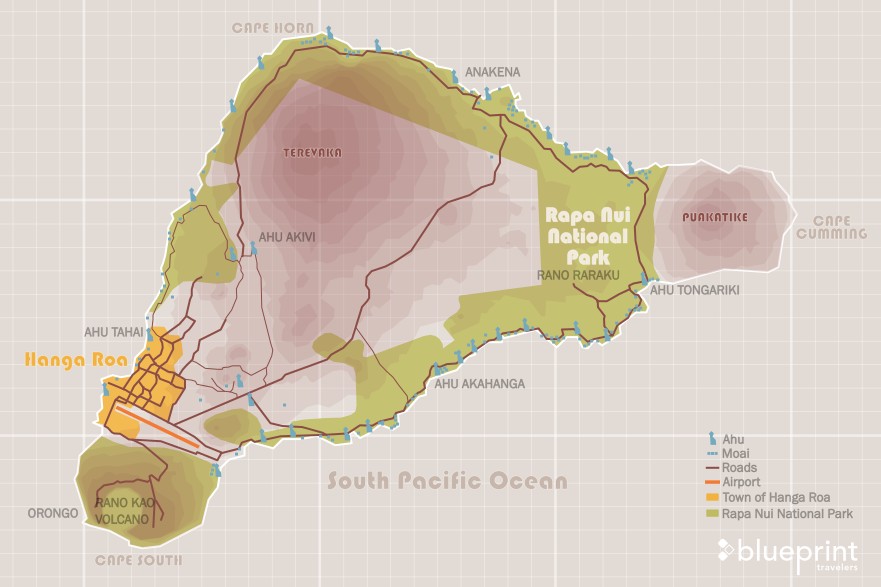Easter Island (Isla de Pascua) or Rapa Nui, as it is called in the local language, is a poetically mysterious island in the middle of the Pacific Ocean. Because it is the most remote inhabited island in the world, there are a lot of questions about the island, the history and culture of the island, and visiting it today. This article is a collection of these questions and answers, including how to visit Easter Island, to help you if you are curious about the Easter Island people and visiting this island in the future.
Easter Island or Rapa Nui?
The people of the island call it the island Rapa Nui. However, it is important to note that the words “Rapa Nui” also refer to the local people of the island and the local language. It will be clear in the context what we are referring to when we say “Rapa Nui”. (It is also a chocolate manufacturer in Argentina. We will not be referring to this but it is delicious and a must try in Bariloche, Argentina.)
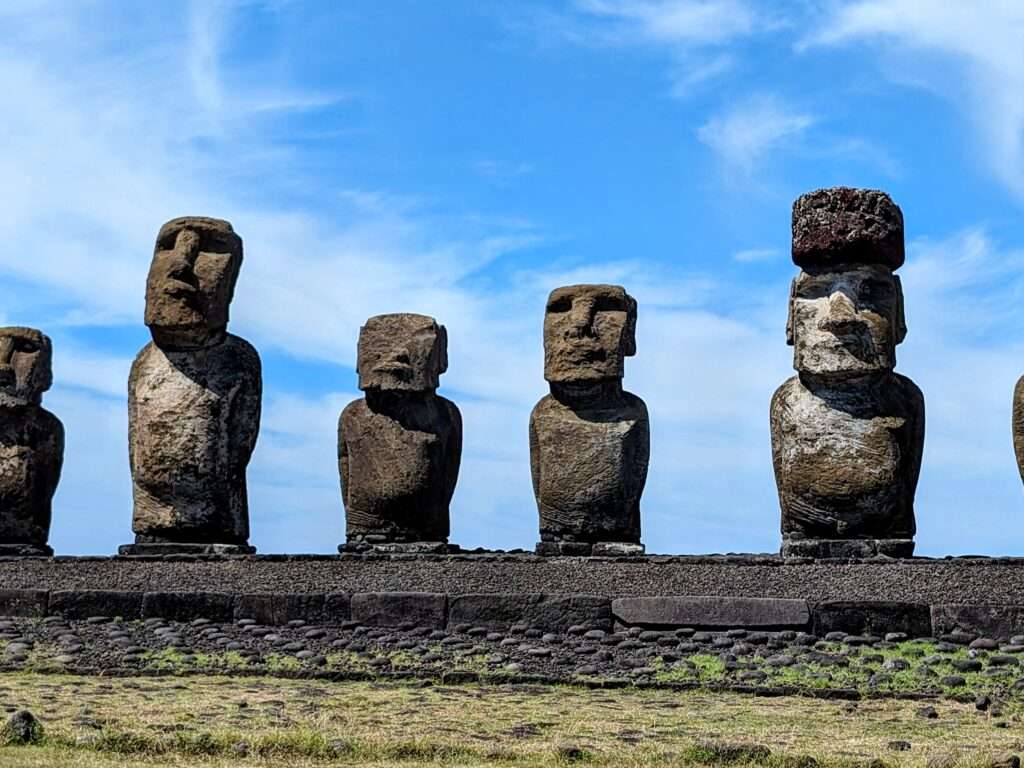
The reason that the island is called Easter Island is because its first European visitor, a Dutch explorer, first saw it on Easter Sunday in 1722. It is not completely clear what the name of the island was prior to the European disruption to the island over the centuries, which caused catastrophic devastation to the population of the island, and as a result, the oral history of the Rapa Nui people. However, today, the island is called Rapa Nui by the local indigenous population.
An Introduction to Easter Island (Rapa Nui)
What Country is Easter Island Part Of?
Easter Island is a territory of Chile. It has its own mayor and is part of the Valparaiso province. Because it is part of Chile, Spanish is the official language of the island, but many inhabitants also speak their indigenous language of Rapa Nui and there are special schools that continue to teach the language on the island.
Where is Easter Island Located?
Easter Island is in the middle of the Pacific Ocean. It is an isolated piece of land, 1,200 miles (1,931 km) from the nearest island and 2,200 miles (3,541 km) from Chile. It is this isolation that makes it so amazing that humans were able to inhabit this island.
The island of Easter Island (Rapa Nui) is considered part of the greater Polynesian civilization, which is anchored by New Zealand, Rapa Nui, and Hawai’i. The people in this area all have similar linguistic, cultural, and genetic characteristics. The two other ethnic groups in the Pacific Ocean are Micronesia and Melanesia, both of which have their own distinct languages and culture.
What are the different parts of Easter Island?
Easter Island island was formed by 3 volcanoes, each at a point of the island. All of them are now extinct but they define the different points of this island shaped as a triangle. One of these volcanoes, Rano Kao, is now a crater and is filled with fresh water, which was used by the indigenous Rapa Nui people.
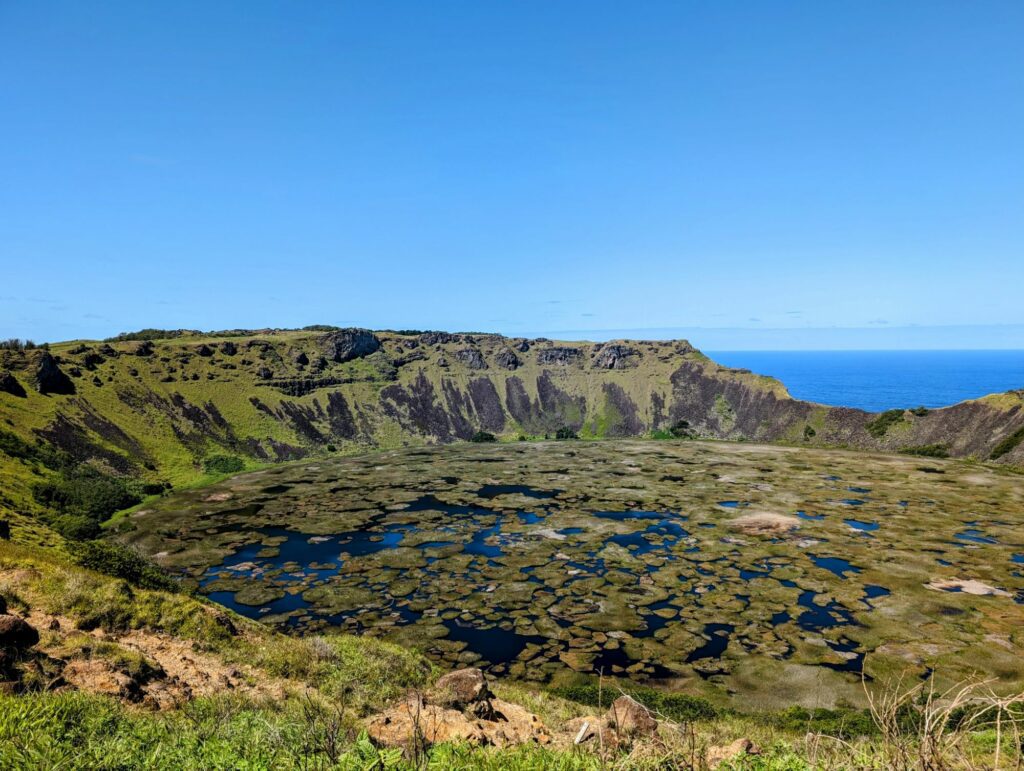
The town, Hanga Roa, is adjacent to the airport and is the main location of the restaurants, accommodations, and tour groups on the island.
The Ahu (altars) and Moai (head statues that are not on an altar) can be found all around the island. Most of them are located in the Rapa Nui National Park that protects much of the island. Many of these locations in the national park can only be visited with a tour guide. Ahu Tahai, the Ahu located within Hanga Roa is always available to visit and is a great location to watch the sunset.
The Culture and History of Easter Island (Rapa Nui
Who are the Rapa Nui People? How did they get to Easter Island?
The Rapa Nui people are a Polynesian group. They came from eastern Polynesia between 800 and 1,200 AD, bringing incredible knowledge in navigating the ocean, farming and fishing skills, and a religious practice.
The actual logistics of finding and getting to the island is still a nautical mystery. It is known that the Polynesians were incredibly skilled sailors and fishermen, giving them the ability to sail far distances. Their skills rivalled the Vikings of Europe. There are also a number of techniques that they used to determine if they were close to land, including using the stars and movement of birds.
What are the Moai or Statues on Easter Island?
The statues on Rapa Nui (Easter Island) are called Moai. They are large stone heads made of different volcanic materials. Each Moai represents an ancestor and leader of the different families that populated the islands. Families lived separately throughout the island, which is why the statues are found throughout.
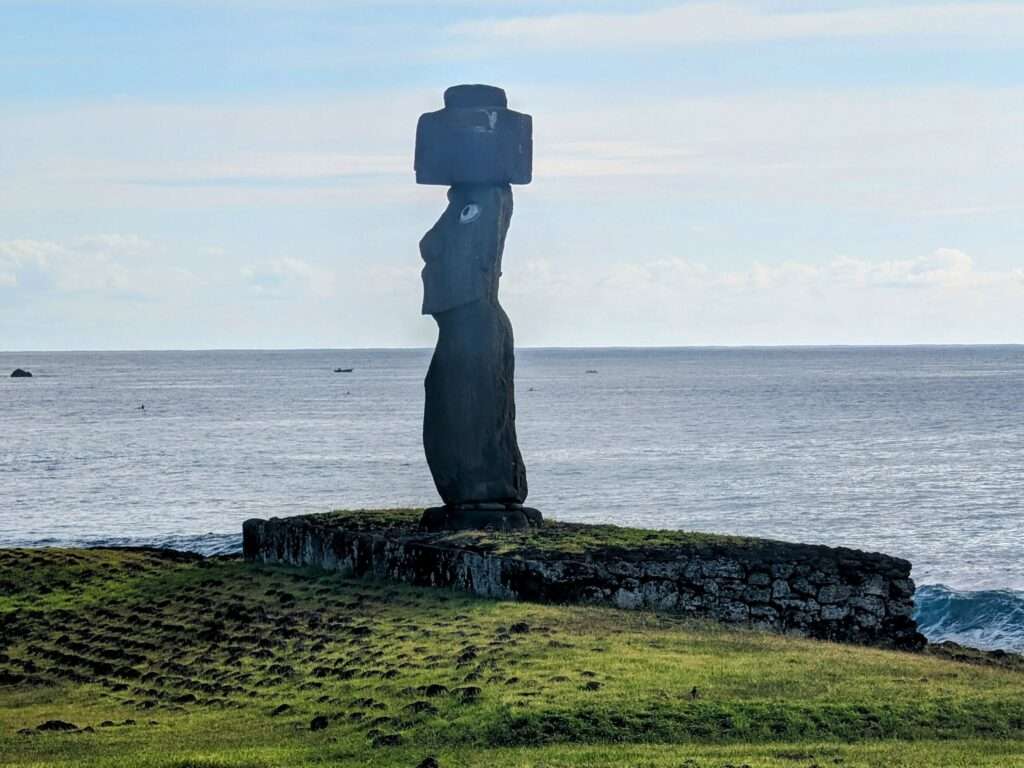
The Moai have three separate pieces to them. The first is the head, which is the physical manifestation of the ancestor. The second is the stone that is on the top of the head. This is typically a red stone and is a representation of the hair of the Rapa Nui people, which most men wore in a bun on the tops of their heads. Adding the hair to the Moai may have made the Rapa Nui people feel like these statues better represented their ancestors. Finally, the eyes of the Moai are typically just sockets. However, during ceremonies, the Rapa Nui people would add eyes onto the statues made out of coral when performing religious celebrations. They believed that adding the eye would bring the Moai to life and the ancestor could now flow through their statue. Today, none of the Moai have eyes the original eyes, but there is one on display in the museum on Rapa Nui.
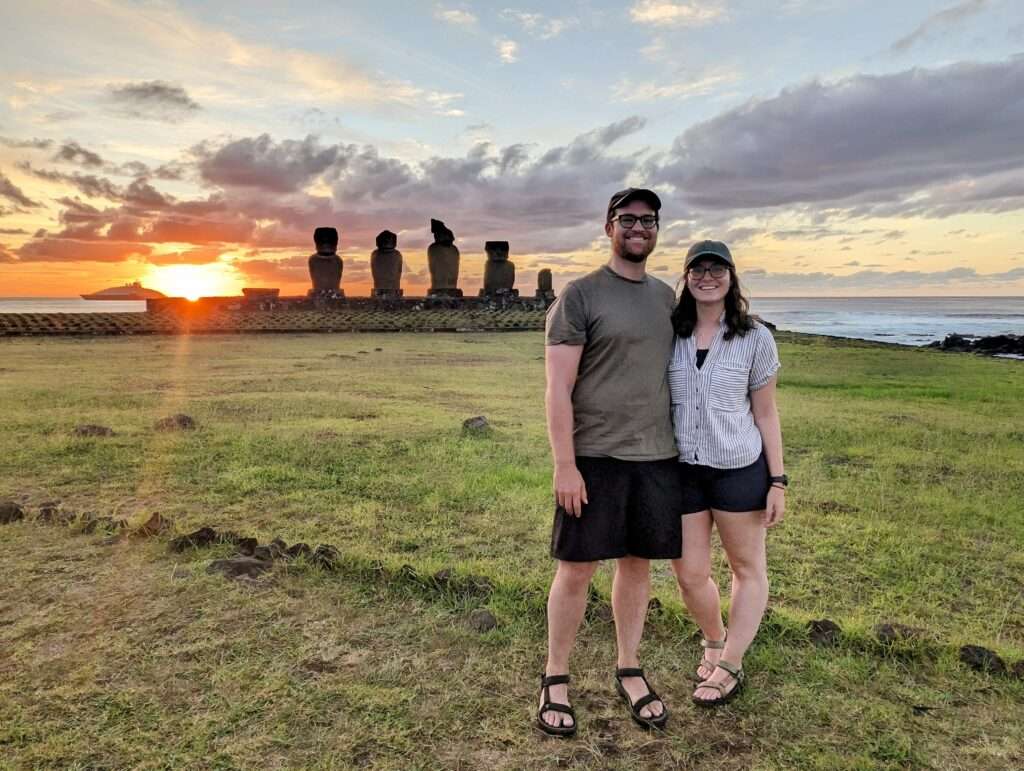
Sometimes, the heads were aligned next to each other on an platform, called an Ahu. Under these platforms, archeologists found human skeletons, leading to the assumption that these altars also served as the graves for the families to whom these Ahu and Moai belonged. The Ahu looked over villages of the families to offer protection. There was also a ceremonial area in front of the Ahu where religious practices were performed and oral tradition was passed down through the generations.
How were the Moai or Head Statues Made and Moved?
The Moai were carved out of volcanic rock found in Rano Raraku. This quarry is where the Moai were carved horizontally into the stone, as if they were laying on the ground. After the statue was carved, it was raised to be vertical. The quarry is where the heads remained until a Rapa Nui leader chose it to be their future Moai when they pass away.
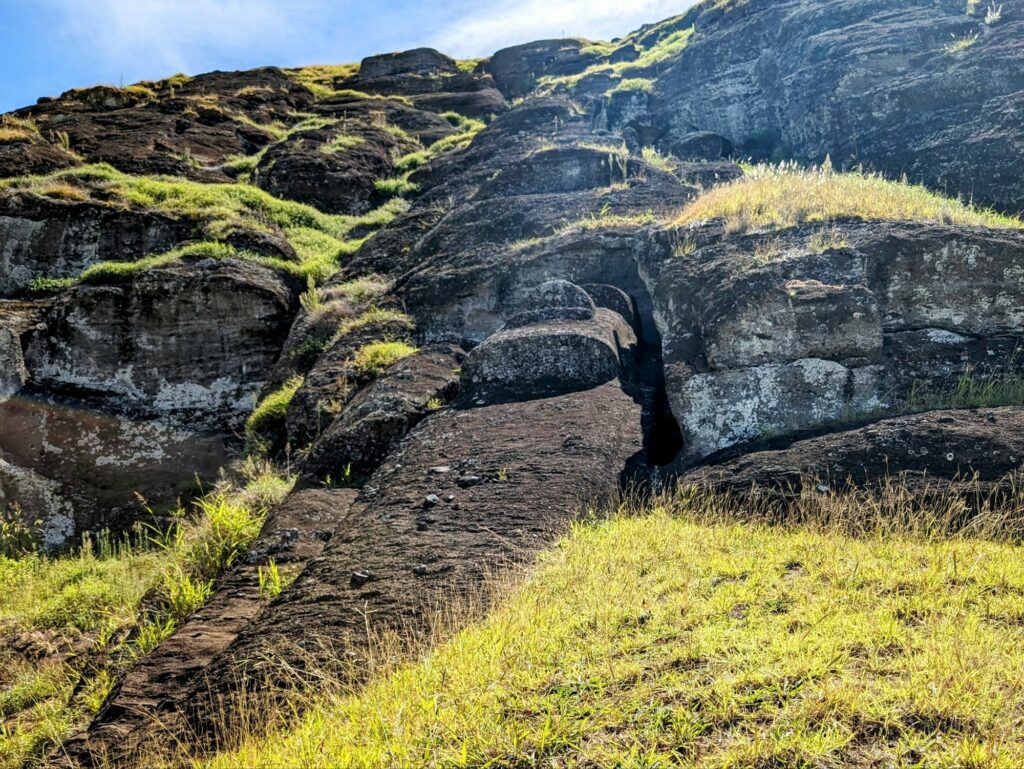
Every part of the Moai was carved and detailed in the quarry except the eyes. In the quarry and without the eyes, the statues are considered just that: statues. The eyes were only added when the Moai were placed in their final location, defining the Moai as a representation of the ancestor.
How Were they Moved?
This question is one of the biggest mysteries surrounding the Moai. There are a number of different theories but only one is corroborated by the oral tradition of the Rapa Nui people. When archaeologists and Europeans asked the Rapa Nui how they moved the Moai, they responded by saying that they walked.
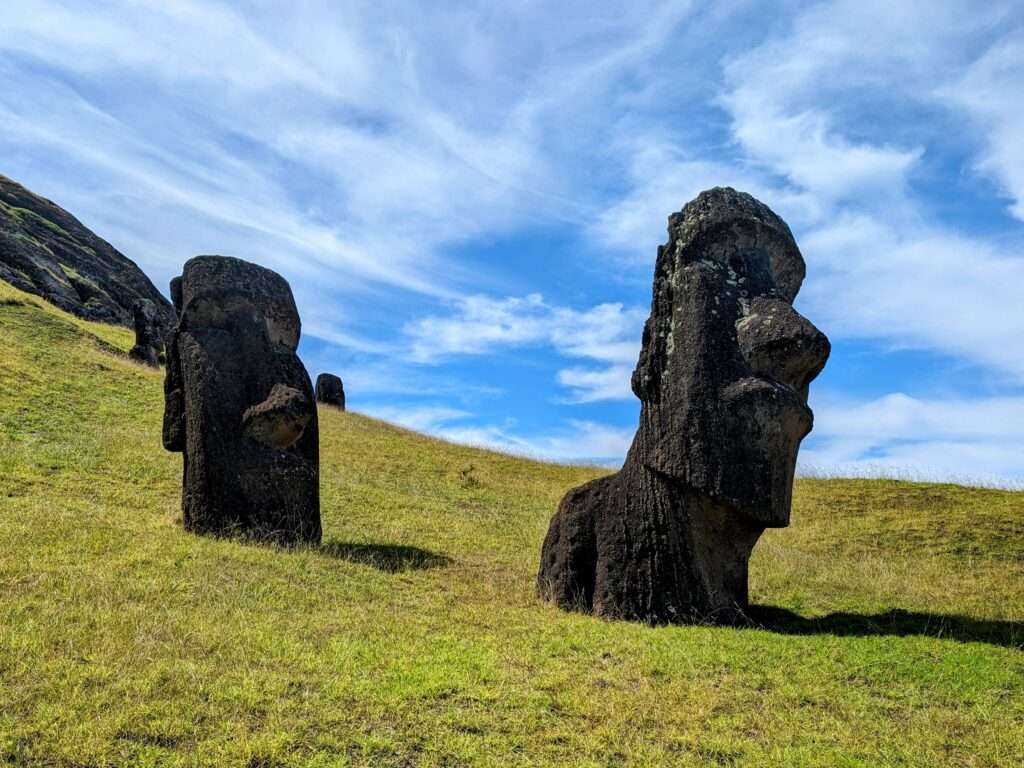
Similarly to how we move a refrigerator today, the Rapa Nui most likely used ropes to tip the statues to one side and rotate them forward before tipping them to the other side and rotating them forward again. This process, which resembled walking, continued until the statue was in its rightful place on the island.
The Moai are located all over the island. Some are on Ahus and others stand alone. They are especially on the perimeter of the island, facing inward where the Rapa Nui lived.
What Happened to the Rapa Nui People, Including the Bridman Cult?
If you drive around Easter Island (Rapa Nui), you will most likely see many of the statues face down on the ground. There was internal conflict, most likely over resources, on the island that caused rivals to knock over each other’s statues, destroying their connection with their ancestors and what they viewed as protection.
The farming lifestyle of the Rapa Nui depleted the resources of the island by the mid 1500s and there needed to be a new way of determining who should be allocated the available resources. They developed the Birdman competitions where one representative from each of the Rapa Nui tribes/families would have to dive to a tiny island and wait for birds to return to this island. The first person to return to Easter Island (Rapa Nui) with an egg was the winner and that tribe would get priority over the resources. People prepared for these competitions in Orongo and you can still see the structures that were built for this purpose today. They were not used as long-term or permanent residence for the people of Rapa Nui.
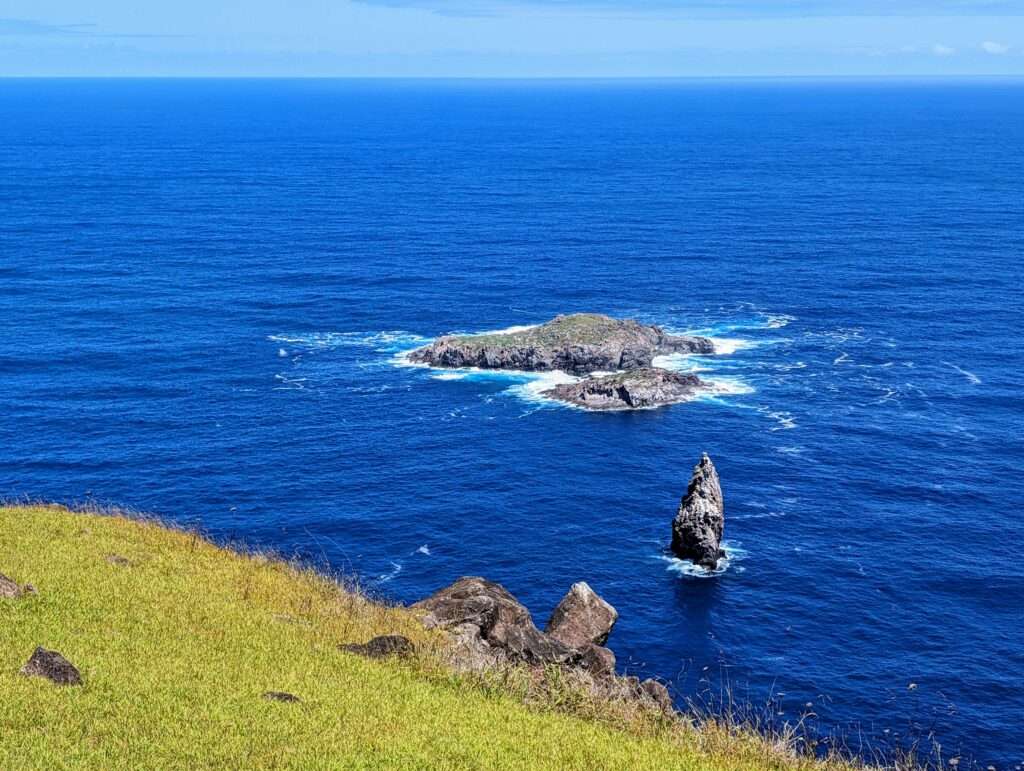
While it is called a “cult” today, it is not completely the case. The people of Rapa Nui continued to follow their religion with the Moai. In fact, a Moai was found in the same location of the Birdman competitions, Orongo. These competitions were developed to help divide resources on the island and prevent more internal fighting.
The Birdman competitions were stopped after the arrival and settlement of the Europeans in the mid 1800s who were imposing their power and religion on the people of Rapa Nui. With that came diseases which decimated the local population and strict restrictions on the freedom of the Rapa Nui people. This is the main reason why so much of their history and culture has been lost.
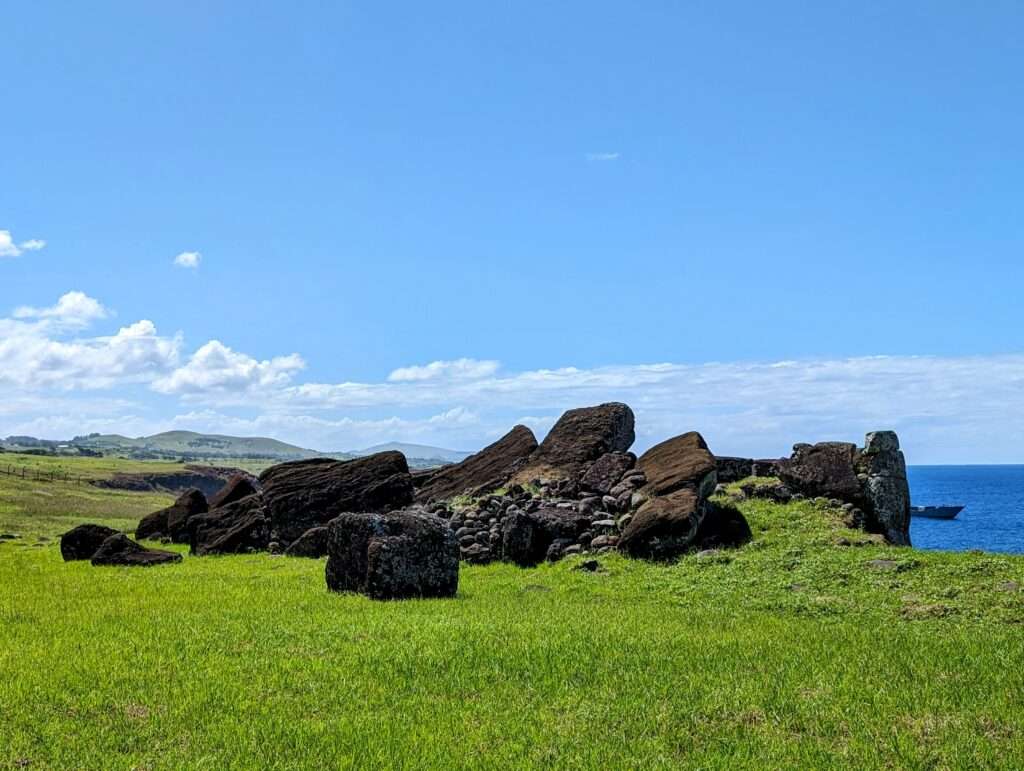
And with regards to the Moai statues that were knocked over, over the years, some of the Moai have been restored but it is an expensive process and the priority has been on the ones that attract tourism.
What is Easter Island Like Today?
Today, most of the people on the island are direct descendents of the Rapa Nui people. There are restrictions on who can own land and live on the island, which have been hard fought by the Rapa Nui people themselves. When visiting the island, you are continuing to support the history, culture, and people of Rapa Nui.
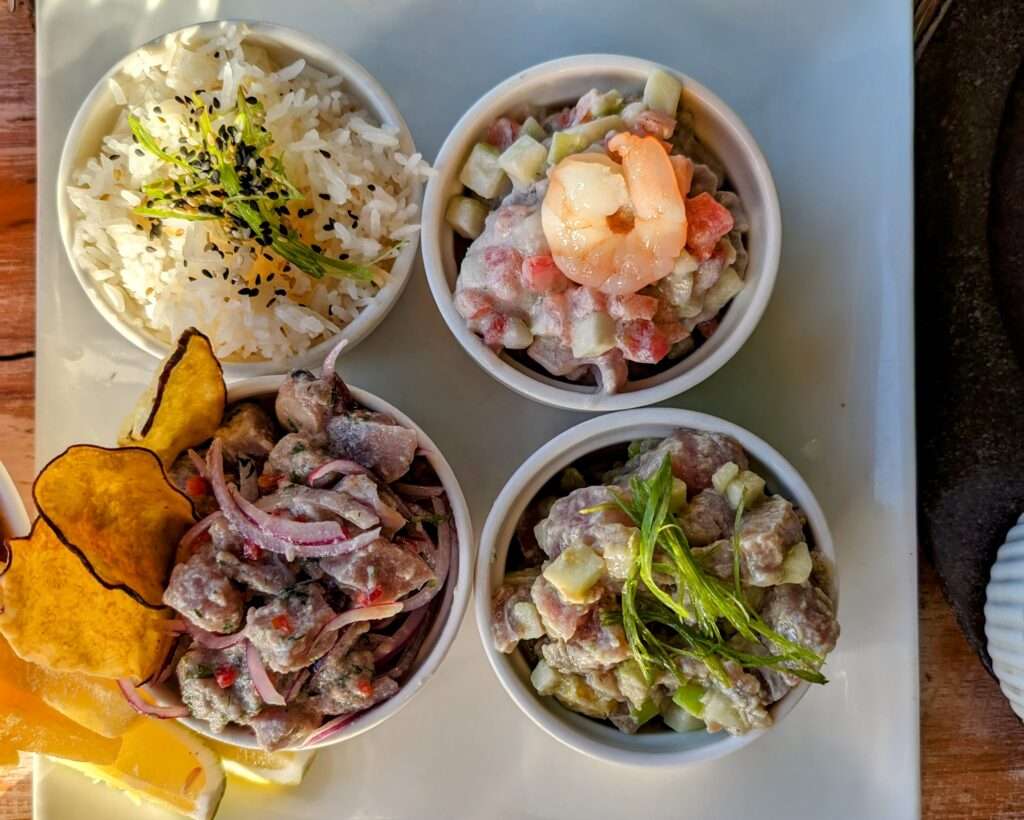
The culture is all around hospitality and sharing and community. When landing at the airport, it is tradition to be picked up at the airport by your host with a lei. The best way to know what the island is like today is to visit it and talk to the local Rapa Nui people!
How to Visit Easter Island (Rapa Nui)
Can I Visit Easter Island? Why Should I go?
Yes you can!
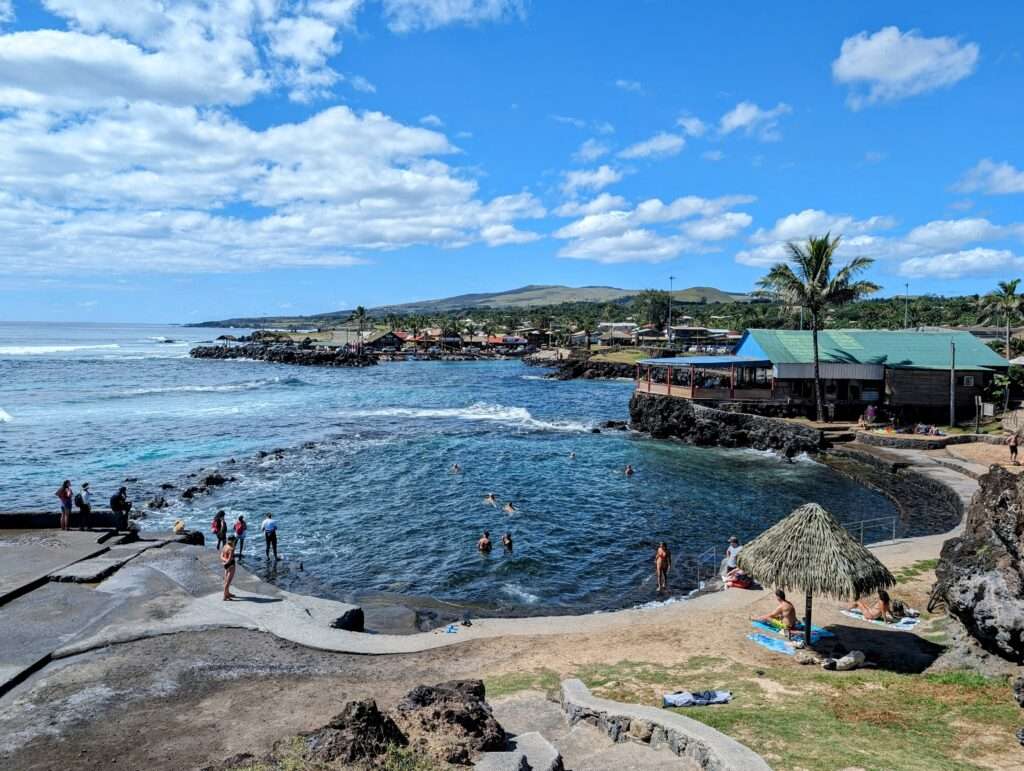
If you are looking for a tropical destination that has not been taken over by global hospitality companies, then Rapa Nui is the place for you. Because the land is owned by Rapa Nui descendants, it does not have the same development of other Polynesian islands, such as Hawai’i. In addition, it does not have the commercialism of other destinations so the prices around the island are more approachable than other tropical locations.
How to Visit Easter Island?

The only commercial flights onto the island come from Santiago, Chile and there are very limited flights. There is only one flight on and off the island a day except for Tuesdays and Thursdays when there are two. (These may be the days where you can get the best flight deals. We recommend going from Thursday to Tuesday to get the best flight deals and spend an ideal amount of time on the island.) You do need a passport and to fill out this online form to go to the island. There are also some cruises that go to the island.
Where to Stay when Looking at How to Visit Easter Island?
When looking at accommodation options for how to visit Easter Island, there are a number of hotels and bed & breakfasts around Hanga Roa that range in price. What is consistent is the hospitality that they display! If you look on Airbnb for accommodations, most of them are really rooms in bed & breakfasts and allow you a great experience on the island for a smaller budget. In addition, if something is listed as a hostel, many times, they still have private rooms and bathrooms and are truly family run bed & breakfasts.
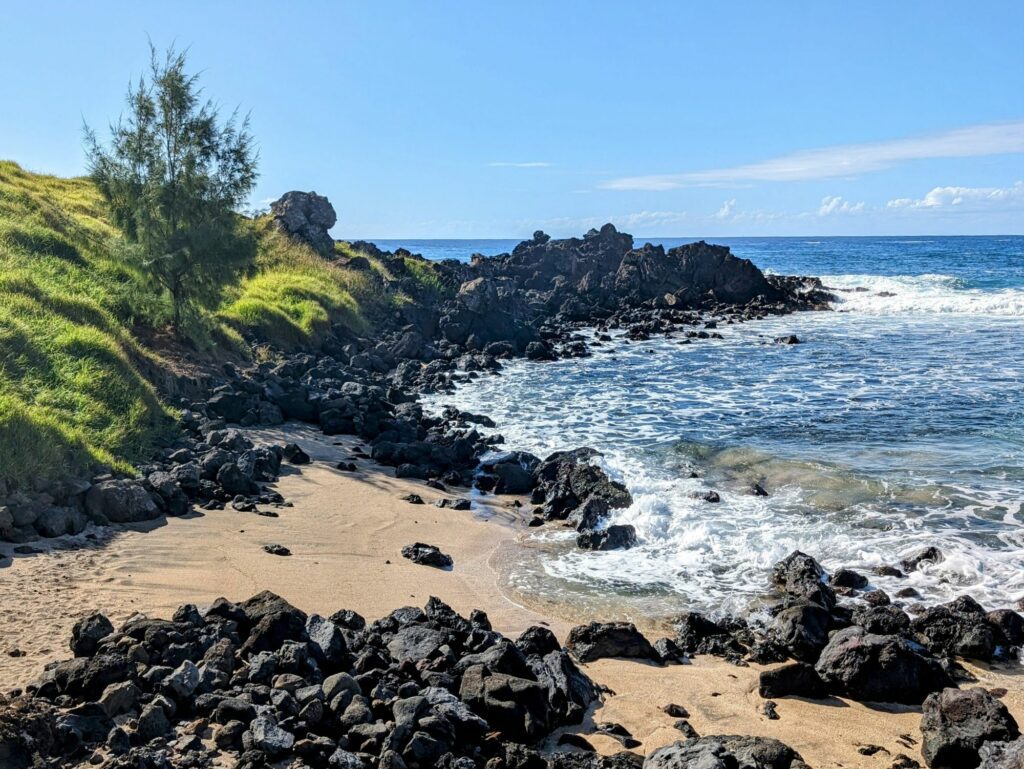
We recommend finding an accommodation close to the center and the coast of Hanga Roa. This will give you the easiest access to restaurants, swimming holes on the coast, and sunset views.
Check out some of the various hotels to stay at on Easter Island.
How to Visit Easter Island without a Guide?
If you are considering how to visit Easter Island without a tour guide, there are areas around Easter Island (Rapa Nui) that you can visit without a guide. You can drive around the island yourself and visit Anakena beach and Ahu Tahai without a guide. And while you can see many of the sites from the road, to actually visit them, you will need a guide. The cost of guides can range significantly. There are some less expensive tour groups that you can use or you can spend more on a private guide. If you are truly interested in learning more about the history and culture of the island, we recommend looking into spending more money on a tour or even getting a private guide because here, the added expense will result in a more personalized and detailed experience that is worth it. Reach out to your host or hotel for any tour guide recommendations.
How to Much Does It Cost to Visit Easter Island?
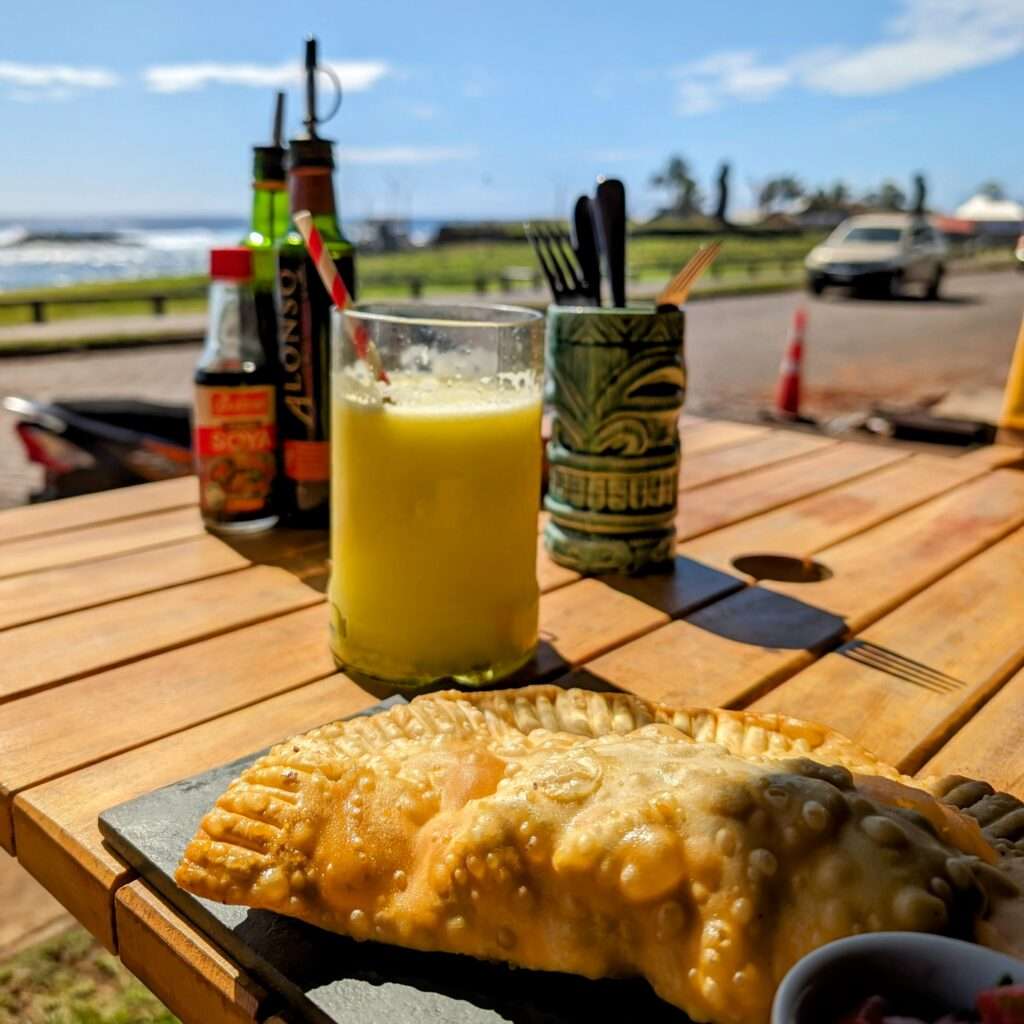
The cost to visit Easter Island will vary based on the level of luxury that you seek out with your accommodations or tour companies. Unlike other famous Polynesia destinations like Hawai’i, visiting here offers a much more approachable price point for a tropical destination. Since the island is not overdeveloped with international hotel chains, there will be more reasonable options that are comfortable and support the local community directly. Keep an eye out for flights on Tuesday or Thursday when there are 2 options so that you can find a nice flight deal and reinvest the savings at the various restaurants or shops around the island.
Some Other Articles You Might be Interested In Beyond This Easter Island FAQ Guide
Did you know that New Zealand was also inhabited by the Polynesian people?

